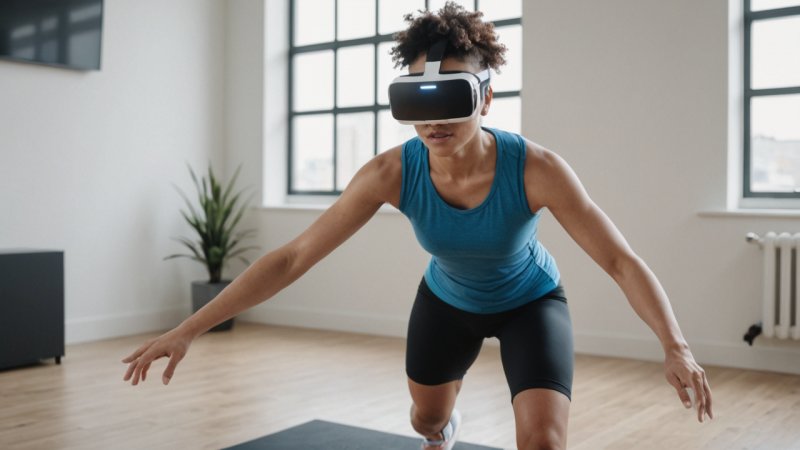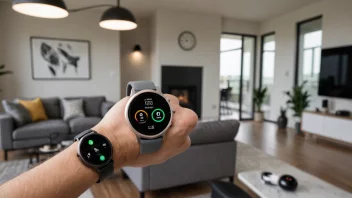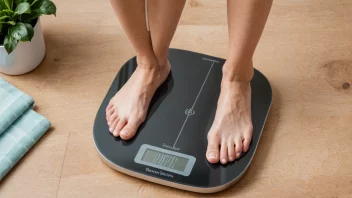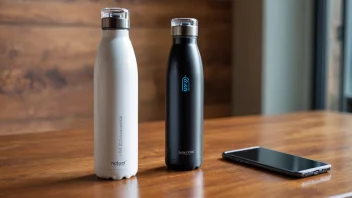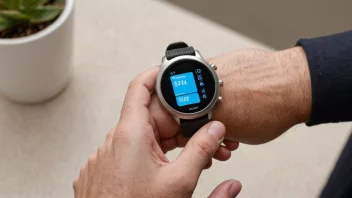As technology continues to evolve, the intersection of fitness and virtual reality (VR) has opened up exciting opportunities for enhancing workout experiences. Wearable devices designed for VR fitness can transform mundane exercise routines into exhilarating adventures. In this article, we’ll explore how VR wearables can elevate your fitness game and provide practical tips for integrating them into your workout regimen.
One of the most accessible ways to dive into VR fitness is through the Oculus Quest 2. This standalone headset not only immerses you in a virtual world but also offers a variety of fitness-oriented games and experiences. From rhythm games like Beat Saber to challenging workouts in games like Supernatural, the Quest 2 allows you to burn calories while having fun. Its wireless design gives you the freedom to move naturally, making your workouts feel less like a chore and more like an adventure.
Another noteworthy option is the HTC Vive Flow, which is not only portable but also compatible with various fitness applications. This lightweight headset enables you to engage in yoga, guided workouts, and meditation sessions in stunning virtual environments. Whether you’re on a virtual beach or in a serene forest, the immersive visuals can elevate your workout experience, helping you to focus and relieve stress.
For a more comprehensive fitness experience, consider incorporating haptic feedback devices into your routine. The bHaptics TactSuit X40, for instance, is a full-body suit that provides real-time feedback during VR workouts. Imagine feeling the impact of your movements or the resistance of an object in a virtual fitness class. This technology can enhance your performance by making workouts feel more realistic and engaging, pushing you to work harder and achieve your goals.
Fitness trackers, such as the Garmin Venu 2, can also complement your VR workouts by monitoring your heart rate, calories burned, and overall activity levels. By keeping track of your progress, you can adjust your workout intensity and set achievable fitness goals. Integrating this data with your VR workouts can help you maintain motivation and track improvements over time.
Additionally, many VR fitness applications now include social features, allowing you to connect with friends and workout together in a virtual space. This social aspect can be incredibly motivating, turning solo workouts into a fun group activity. Whether you’re competing in a game or participating in a virtual fitness class, working out with friends can help you stay accountable and engaged.
To get the most out of your VR fitness experience, it’s important to create a dedicated workout space. Make sure you have enough room to move freely and safely, minimizing the risk of injury. Setting up a designated area helps you focus and immerse yourself in your workouts without distractions. You may also want to invest in a comfortable headset strap or cushion to enhance comfort during longer sessions.
In conclusion, VR wearable technology has the potential to revolutionize your fitness routine. By integrating devices like the Oculus Quest 2, HTC Vive Flow, and haptic feedback suits, you can make exercising more enjoyable and effective. With the added motivation of fitness tracking and social features, VR fitness can help you achieve your health goals while having fun. As technology continues to evolve, the possibilities for enhancing fitness through VR wearables will only expand, making it an exciting time to explore this innovative approach to health and wellness.
Enhancing Fitness with VR Wearable Technology
Discover how VR wearable technology can revolutionize your fitness routine and make workouts more engaging and enjoyable.
